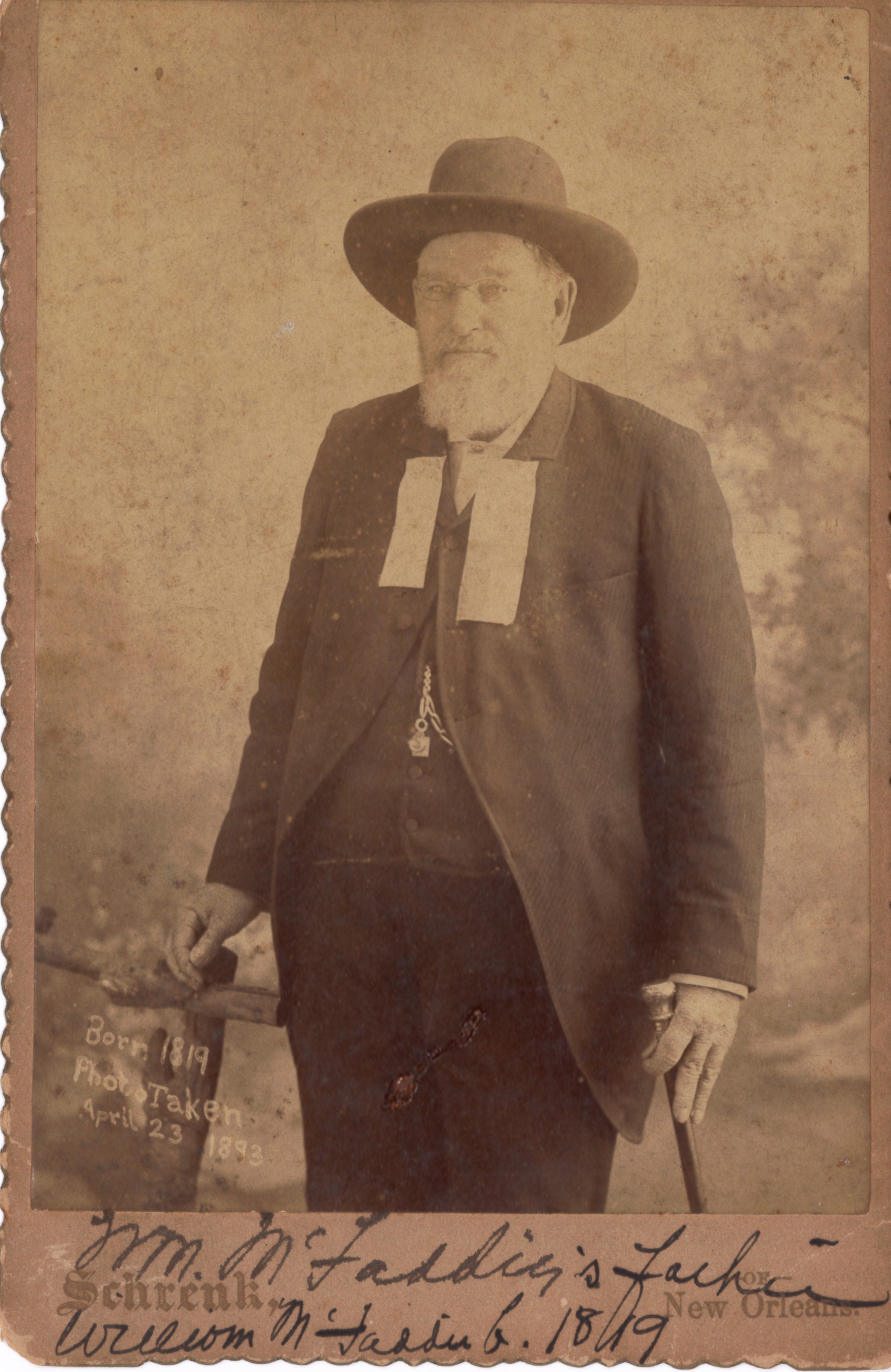.JPG)
By Judith Linsley
As soon as they could, Texas pioneers began to recreate the social structure that they had left behind-schools, places of worship, and cemeteries. In Beaumont, the first cemeteries were private ones, located on the land of early settlers. Nearly all are gone today.
In 1876, William McFaddin donated two and one-half acres of land north of Beaumont to the town for use as a public cemetery. The site, on the Neches River, adjoined his family's private burial plot. According to an editorial in the Beaumont Enterprise of February 12, 1881, it was "the best place for the purpose…in the vicinity of town." It was "naturally a beautiful spot drained by a deep ravine" and offered "every opportunity to make a desirable place of sepulture."
The Enterprise editor, John W. Leonard, added, however, that "this naturally beautiful cemetery is in a deplorable condition. It has no enclosure and is full of under-growth. It is approached by a muddy and almost impassable road and is grazed by all the stray cattle in the vicinity." It was also too small for future growth.
The editorial continued, "Beaumont is in most particulars, a live town, but in this respect has shown great neglect. Our town is increasing daily in population. It has railroad communication east and west and will soon have the same thing north and south. The first question which one of the better class of immigrants asks, is…if they can educate their children, secure religious instruction and bury their dead decently." (That actually sounds more like three questions.)
The Enterprise offered a solution-a joint stock company that would purchase additional acreage from William McFaddin, subdivide it into plots and sell it to families or individuals. The money would go toward fencing, cleanup, and making the road from "Mr. Fletcher's house" to the cemetery passable. (W.A. Fletcher lived on the north side of Beaumont at the head of the road that led to the cemetery.)

The proposal came to pass. In 1887 William McFaddin sold 13 acres to a group of five Beaumonters for 400 dollars; Valentine Wiess, Edward L. Wilson, A.S. John, H.W. Smith, and John L. Keith became the first trustees of the Magnolia Cemetery Company.
The company issued 400 shares of capital stock to be sold to stockholders for 25 dollars a share. Trustees made plans to clean up the cemetery and have it surveyed. They even co-sponsored a fundraiser, a "Grand Tournament and Strawberry Festival" with the Ladies' Guild and the Council of Temperance.
Though the cemetery rarely showed a profit in early years, it grew greatly in space, as more and more Beaumonters found their final resting place there. One growth spurt came during the influenza pandemic of 1918, when supposedly each morning grave diggers found coffins stacked at the gate, waiting for burial.
Today, a visit to Magnolia Cemetery is like taking a trip through Beaumont history. With its tall trees and well-kept grounds, it's also a beautiful place. John W. Leonard would be very pleased.